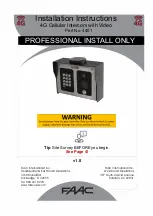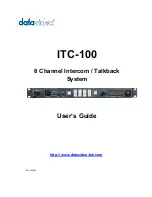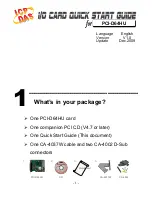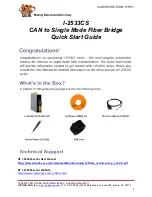
CMT-S30iP.GB.4-460-927-11(1)
Using the timers
The system offers two timer functions. If you use
both timers, the Sleep Timer has priority.
Sleep Timer:
You can fall asleep to music. This function works
even if the clock is not set.
Press SLEEP
repeatedly. If you select “AUTO,”
the system automatically turns off after the
current disc or USB device stops, or within
100 minutes.
Play Timer:
You can wake up to a CD, FM reception, iPod/
iPhone, USB device or an audio component
connected to the AUDIO IN jack
at a preset
time.
Make sure you have set the clock.
1
Prepare the sound source.
Prepare the sound source, and then press
/
to adjust the volume.
To start from a specific CD track or audio file,
create your own program.
2
Select the timer set mode.
Press TIMER MENU
.
If the clock is not set, the system will be in
clock set mode. In that case, set the clock.
3
Set the play timer.
Press
/
repeatedly to select “PLAY
SET,” then press
.
4
Set the time to start playback.
Press
/
repeatedly to set the hour,
then press
. Use the procedure above to
set the minutes.
5
Use the same procedure as in step 4 to
set the time to stop playback.
6
Select the sound source.
Press
/
repeatedly until the desired
sound source appears, then press
.
7
Turn off the system.
Press
. The system automatically turns
on before the preset time.
If the system is on at the preset time, the Play
Timer will not play. Do not operate the system
from the time the system turns on until the
playback starts.
To check the setting
1
Press TIMER MENU
.
2
Press
/
repeatedly to select
“SELECT,” and then press
.
3
Press
/
repeatedly to select
“PLAY SEL,” and then press
.
To cancel the timer
Repeat the same procedure as above until “OFF”
appears in step 3, and then press
.
To change the setting
Start over from step 1.
Notes for the users of iPod/iPhone
Make sure the iPod/iPhone is not playing when
using the Play Timer.
The Play Timer may not be activated depending
on the status of the connected iPod/iPhone.
Tip
The Play Timer setting remains as long as the setting
is not cancelled manually.
Compatible devices with this
system
iPod/iPhone
You can use the following iPod/iPhone models
with this system. Update your iPod/iPhone with
the latest software before using with the system.
Made for
iPhone 5
iPhone 4S
iPhone 4
iPhone 3GS
iPod touch (5th generation)
iPod touch (4th generation)
iPod touch (3rd generation)
iPod classic
iPod nano (7th generation)
iPod nano (6th generation)
iPod nano (5th generation)
iPod nano (4th generation)
USB devices
Check the websites below for the information
about compatible USB devices.
For customers in Europe:
http://support.sony-europe.com/
For customers in Canada:
http://esupport.sony.com/CA
For customers in Latin America:
http://esupport.sony.com/LA
For customers in other countries/regions:
http://www.sony-asia.com/support
Troubleshooting
1
Make sure the power cord and speaker
cords are correctly and firmly connected.
2
Find your problem in the checklist below,
and take the indicated corrective action.
If the issue persists, contact your nearest Sony
dealer.
If “PROTECT” appears on the
display
Immediately unplug the power cord, and
check the following items after “PROTECT”
disappears.
Are the + and
speaker cords short-
circuited?
Is anything blocking the ventilation holes of
the system?
After you have checked these above items
and found to be all right, reconnect the power
cord, and turn on the system. If the issue
persists, contact your nearest Sony dealer.
General
The system does not turn on.
Is the power cord plugged in?
The system has entered standby mode
unexpectedly.
This is not a malfunction. The system enters
standby mode automatically in about
30 minutes when there is no operation or
audio signal output. See “To turn off the
automatic standby function.”
The clock setting or the Play Timer
operation has been cancelled
unexpectedly.
If about a minute elapses with no operation,
the clock setting or Play Timer setting is
cancelled automatically. Perform the operation
again from the beginning.
There is no sound.
Are the + and
speaker cords short-circuited?
Are you using only the supplied speakers?
Is anything blocking the ventilation holes of
the system?
The specified station may have temporarily
stopped broadcast.
Sound comes from one channel, or the
left and right volumes are unbalanced.
Place the speakers as symmetrically as
possible.
Connect only the supplied speakers.
Severe hum or noise.
Move the system away from sources of noise.
Connect the system to a different wall outlet.
Install a noise filter (available separately) to the
power cord.
The remote does not function.
Remove any obstacles between the remote
and the remote sensor
on the unit, and
position the unit away from fluorescent lights.
Point the remote at the system’s sensor.
Move the remote closer to the system.
CD/MP3/WMA player
The sound skips, or the disc will not play.
Wipe the disc clean, and replace it.
Move the system to a location away from
vibration (for example, on top of a stable
stand).
Move the speakers away from the system, or
place them on separate stands. At high
volume, speaker vibration may cause the
sound to skip.
Play does not start from the first track.
Set the play mode to normal play mode.
Starting playback takes more time than
usual.
The following discs can increase the time it
takes to start playback;
a disc recorded with a complicated tree
structure.
a disc recorded in multisession mode.
a disc that has not been finalized (a disc to
which data can be added).
a disc that has many folders.
iPod/iPhone
There is no sound.
Make sure the iPod/iPhone is connected
securely.
Make sure the iPod/iPhone is playing music.
Make sure the iPod/iPhone is updated with the
latest software. If not, update the iPod/iPhone
before using with the system.
Adjust the volume.
The sound is distorted.
Make sure the iPod/iPhone is connected
securely.
Turn down the volume.
Set the “EQ” setting of the iPod/iPhone to “Off”
or “Flat.”
The iPod/iPhone does not function.
Shut down any other “iOS” applications
running on the iPod/iPhone. For details, refer
to the operation manual supplied with the
iPod/iPhone.
Make sure the iPod/iPhone is connected
securely.
Make sure the iPod/iPhone is updated with the
latest software. If not, update the iPod/iPhone
before using with the system.
Because the operation of the system and the
iPod/iPhone are different, you may not operate
the iPod/iPhone using buttons on the remote
or unit. In this case, use the control buttons on
the iPod/iPhone.
The connected iPod/iPhone cannot be
charged.
Make sure the iPod/iPhone is connected
securely.
Make sure the system is turned on.
USB device
The connected USB device cannot be
charged.
Make sure the USB device is connected
securely.
Some USB devices can be charged only when
the system is in the USB function.
Are you using a supported USB device?
If you connect an unsupported USB device, the
following problems may occur. Check the
information on websites for compatible USB
devices using the URLs listed under “USB
devices” in “Compatible devices with this
system.”
The USB device is not recognized.
File or folder names are not displayed on this
system.
Playback is not possible.
The sound skips.
There is noise.
A distorted sound is output.
“OVER CURRENT” appears.
A problem has been detected with the level of
electrical current from the
(USB) port
.
Turn off the system and remove the USB device
from the
(USB) port
. Make sure there is
no problem with the USB device. If this display
pattern persists, contact your nearest Sony
dealer.
There is no sound.
The USB device is not connected correctly. Turn
off the system, then reconnect the USB device.
There is noise, skipping, or distorted
sound.
Turn off the system, then reconnect the USB
device.
The music data itself contains noise, or the
sound is distorted. Noise may have been
entered when creating music data due to the
conditions of the computer. Create the music
data again.
The bit rate used when encoding the files was
low. Send files encoded with higher bit rates to
the USB device.
“SEARCH” is displayed for an extended
time, or it takes a long time before
playback starts.
The reading process can take a long time in the
following cases.
There are many folders or files on the USB
device.
The file structure is extremely complex.
The memory capacity is excessive.
The internal memory is fragmented.
Erroneous display
Send the music data to the USB device again,
as the data stored in the USB device may have
been corrupted.
The character codes that can be displayed by
this system are numbers and alphabets only.
Other characters are not displayed correctly.
Messages
DISC ERR :
You have loaded a disc that cannot
be played.
FULL :
You tried to program more than 64 tracks
or files (steps).
NO FILE :
There are no playable files on the
CD-R/CD-RW discs or in the USB device.
NO STEP :
All of the programmed tracks have
been erased.
NO USB :
No USB device is connected or an
unsupported USB device is connected.
PLAY SET :
You tried to select the timer when the
Play Timer is not set.
PLS STOP :
You pressed PLAY MODE
during
playback.
SELECT :
You pressed TIMER MENU
during
timer operation.
TIME NG :
The Play Timer start and end times are
set to the same time.
Precautions
Discs that this system CAN play
Audio CD
CD-R/CD-RW (audio data/MP3/WMA files)
Discs that this system CANNOT play
CD-ROM
CD-R/CD-RW other than those recorded in
music CD format, conforming to ISO9660 Level
1/Level 2 or Joliet
CD-R/CD-RW recorded in multisession that
have not ended by “closing the session”
CD-R/CD-RW of poor recording quality, CD-R/
CD-RW that have scratches or are dirty, or
CD-R/CD-RW recorded with an incompatible
recording device
CD-R/CD-RW which is finalized incorrectly
Discs containing files other than MPEG 1 Audio
Layer-3 (MP3)/WMA files
Discs of non-standard shape (for example,
heart, square, star)
Discs that have adhesive tape, paper, or sticker
attached to them
Rental or used discs with attached seals where
the glue extends beyond the seal
Discs that have labels printed using ink that
feels tacky when touched
Notes on discs
Before playing, wipe the disc with a cleaning
cloth from the center out to the edge.
Do not clean discs with solvents, such as
benzine, thinner, or commercially available
cleaners or anti-static spray intended for vinyl
LPs.
Do not expose discs to direct sunlight or heat
sources such as hot air ducts, nor leave them in
a car parked in direct sunlight.
Note on DualDiscs
A DualDisc is a two sided disc product which
mates DVD recorded material on one side with
digital audio material on the other side. However,
since the audio material side does not conform
to the Compact Disc (CD) standard, playback on
this product is not guaranteed.
Music discs encoded with copyright
protection technologies
This product is designed to playback discs that
conform to the Compact Disc (CD) standard.
Recently, various music discs encoded with
copyright protection technologies are marketed
by some record companies. Please be aware that
among those discs, there are some that do not
conform to the CD standard and may not be
playable by this product.
On safety
Completely disconnect the power cord (mains
lead) from the wall outlet (mains) if it is not
going to be used for an extended period of
time. When unplugging the unit, always grip
the plug. Never pull the cord itself.
Should any solid object or liquid get into the
system, unplug the system, and have it
checked by qualified personnel before
operating it again.
The AC power cord can be changed only by a
qualified service facility.
On placement
Do not place the system in an inclined position
or in locations that are extremely hot, cold,
dusty, dirty, or humid or lacking adequate
ventilation, or subject to vibration, direct
sunlight or a bright light.
Be careful when placing the unit or speakers
on surfaces that have been specially treated
(for example, with wax, oil, polish) as staining
or discoloration of the surface may result.
If the system is brought directly from a cold to
a warm location or is placed in a very damp
room, moisture may condense on the lens
inside the CD player, and cause the system to
malfunction. In this situation, remove the disc,
and leave the system turned on for about an
hour until the moisture evaporates.
On heat buildup
Heat buildup on the unit during operation is
normal and is not cause for alarm.
Do not touch the cabinet if it has been used
continuously at a high volume because the
cabinet may have become hot.
Do not obstruct the ventilation holes.
On the speaker system
This speaker system is not magnetically shielded,
and the picture on nearby TV sets may become
magnetically distorted. In this situation, turn off
the TV, wait 15 to 30 minutes, and turn it back on.
If there is no improvement, move the speakers
far away from the TV.
Cleaning the cabinet
Clean this system with a soft cloth slightly
moistened with a mild detergent solution. Do not
use any type of abrasive pad, scouring powder,
or solvent, such as thinner, benzine, or alcohol.
Specifications
Main unit
Amplifier section
Power output (rated): 4 watts + 4 watts
(8 ohms at 1 kHz, 1% THD)
Continuous RMS power output (reference):
5 watts + 5 watts (8 ohms at 1 kHz, 10% THD)
Input
AUDIO IN (stereo mini jack): Sensitivity 1 V,
impedance 50 kilohms
Outputs
SPEAKERS: Accepts impedance of 8 ohms
CD player section
System: Compact disc and digital audio system
Laser Diode Properties
Emission Duration: Continuous
Laser Output*: Less than 44.6µW
* This output is the value measurement at a distance of
200mm from the objective lens surface on the Optical
Pick-up Block with 7mm aperture.
Frequency response: 20 Hz
20 kHz
Signal-to-noise ratio: More than 90 dB
Dynamic range: More than 90 dB
Tuner section
FM stereo, FM superheterodyne tuner
Antenna: FM lead antenna
Tuning range:
Canadian and Brazilian models: 87.5 MHz
108.0 MHz (100 kHz step)
Other models: 87.5 MHz
108.0 MHz (50 kHz
step)
USB section
(USB) port*:
Type A, maximum current: 5 V, 1 A
* Use the USB cable supplied with your iPod/iPhone when
connecting it to the
(USB) port.
Supported audio formats (MP3/WMA discs and USB
devices only)
Supported bit rate:
MP3 (MPEG 1 Audio Layer-3): 32 kbps
320 kbps, VBR
WMA: 32 kbps
192 kbps, VBR
Sampling frequencies:
MP3 (MPEG 1 Audio Layer-3): 32/44.1/48 kHz
WMA: 44.1 kHz
Speaker
Speaker system: Full range, 8 cm (3
1
/
8
in) dia.,
cone type
Rated impedance: 8 ohms
Dimensions (W/H/D): Approx. 148 mm × 240 mm
× 127 mm (5
7
/
8
in × 9
1
/
2
in × 5 in)
Mass: Approx. 1.2 kg (2 lb 10
3
/
8
oz) net per
speaker
Quantity: 2 pieces
General
Power requirements: AC 120 V
240 V, 50/60 Hz
Power consumption: 23 watts
Dimensions (W/H/D, including largest
protrusions) (excl. speakers):
Approx. 170 mm × 133 mm × 240 mm (6
3
/
4
in ×
5
1
/
4
in × 9
1
/
2
in)
Mass (excl. speakers): Approx. 1.3 kg (2 lb
13 7
/
8 oz)
Quantity of the main unit: 1 piece
Supplied accessories: Remote Commander (1),
FM lead antenna (1), Speaker pads (8)
Design and specifications are subject to change
without notice.
Standby power consumption: 0.5 W
Halogenated flame retardants are not used in
the certain printed wiring boards.
License and Trademark
Notice
iPhone, iPod, iPod classic, iPod nano, and iPod
touch are trademarks of Apple Inc., registered
in the U.S. and other countries.
“Made for iPod,” and “Made for iPhone” mean
that an electronic accessory has been designed
to connect specifically to iPod or iPhone,
respectively, and has been certified by the
developer to meet Apple performance
standards. Apple is not responsible for the
operation of this device or its compliance with
safety and regulatory standards. Please note
that the use of this accessory with iPod or
iPhone may affect wireless performance.
MPEG Layer-3 audio coding technology and
patents licensed from Fraunhofer IIS and
Thomson.
Windows Media is either a registered
trademark or trademark of Microsoft
Corporation in the United States and/or other
countries.
This product is protected by certain intellectual
property rights of Microsoft Corporation. Use or
distribution of such technology outside of this
product is prohibited without a license from
Microsoft or an authorized Microsoft
subsidiary.
All other trademarks and registered trademarks
are of their respective holders. In this manual,
TM
and
®
marks are not specified.
The USB device is not recognized.
Turn off the system and reconnect the USB
device, then turn on the system.
Check the information on websites for
compatible USB devices using the URLs listed
under “USB devices” in “Compatible devices
with this system.”
The USB device does not work properly. Refer
to the USB device operation manual for how to
deal with this problem.
Play does not start.
Turn off the system and reconnect the USB
device, then turn on the system.
Check the information on websites for
compatible USB devices using the URLs listed
under “USB devices” in “Compatible devices
with this system.”
Press
to start playback.
Play does not start from the first track.
Set the play mode to Normal Play mode.
Files cannot be played back.
The audio files may have inappropriate file
extensions. The file extensions supported by
this system are as follows:
MP3: file extension “.mp3”
WMA: file extension “.wma”
The audio files may have been created in
formats other than MP3/WMA formats.
USB storage devices formatted with file
systems other than FAT16 or FAT32 are
unsupported.*
If you use a partitioned USB storage device,
only files on the first partition can be played.
Files that are encrypted or protected by
passwords, etc. cannot be played back.
* This system supports FAT16 and FAT32, but some
USB storage devices may not support all of these
FAT. For details, see the operation manual of each
USB storage device or contact the manufacturer.
Tuner
Severe hum or noise, or stations cannot
be received.
Connect the antenna properly.
Try another place and orientation for better
antenna reception.
Keep the antenna away from the speaker cords
and the power cord to avoid picking up noise.
Turn off nearby electrical equipment.
Several radio stations can be heard at the
same time.
Try another place and orientation for better
antenna reception.
Bundle the antenna cable using commercially
available cord clips, for example, and adjust the
cable length.
To reset the system to factory
settings
If the system still does not operate properly, reset
the system to factory settings.
1
Disconnect and reconnect the power
cord, and then turn on the system.
2
Hold down
on the remote and EQ
on the unit until “RESET OK” appears.
All user-configured settings, such as preset
radio stations, timer, and the clock, are
deleted.
To turn off the automatic standby
function
This system is equipped with an automatic
standby function. With this function, the system
enters standby mode automatically in about 30
minutes when there is no operation or audio
signal output.
By default, the automatic standby function is
turned on.
Use buttons on the unit to turn off the automatic
standby function.
Hold down
while the system is
on, until “AUTO STANDBY OFF” appears.
To turn on the function, repeat the procedure
until “AUTO STANDBY ON” appears.
Notes
The automatic standby function is invalid for the
FM function.
The system may not enter standby mode
automatically in the following cases;
when an audio signal is detected.
when an iPod/iPhone or a USB device is
connected.
during playback of audio tracks or files.
while the preset Play Timer or Sleep Timer is in
process.
Using optional audio
components
1
Prepare the sound source.
Connect additional audio component to the
AUDIO IN jack
on the unit using an audio
analog cord (not supplied).
2
Turn down the volume.
Press VOLUME
.
3
Select the AUDIO IN function.
Press AUDIO IN
.
4
Start playback.
Start playback of the connected component
and adjust the volume.
Note
The system may enter standby mode automatically
if the volume level of the connected component is
too low. Adjust the component’s volume
accordingly. See “To turn off the automatic standby
Adjusting the sound
To
Press
Adjust the
volume
/
.
Generate a
more dynamic
sound
BASS BOOST
.
Set the sound
effect
EQ
repeatedly until desired
sound effect is displayed.
Changing the display
To
Press
Change
information on
the display*
DISPLAY
repeatedly when
the system is on.
Check the clock
when the
system is off
DISPLAY
when the system
is off. The clock is displayed
for 8 seconds.
* For example, you can view CD/MP3/WMA disc
information or the USB device information, such
as;
track or file number during normal play.
track, file or title name during normal play.
artist name during normal play.
album or folder name during normal play.
total playing time and total number of tracks on
the CD-DA disc (only when normal play mode is
selected and the player is stopped).
Notes on the display information
Characters that cannot be displayed appear as “_”.
The following are not displayed;
total playing time for an MP3/WMA disc and a
USB device.
remaining playing time for an MP3/WMA file.
The following are not displayed correctly;
elapsed playing time of an MP3/WMA file
encoded using VBR (variable bit rate).
folder and file names that do not follow either
the ISO9660 Level 1, Level 2 or Joliet in the
expansion format.
The following are displayed;
remaining playing time for a track.
ID3 tag information for MP3 files when ID3
version 1 and version 2 tags are used (ID3
version 2 tag information display has priority
when both ID3 version 1 and version 2 tags are
used for a single MP3 file).
up to 31 characters of ID3 tag information using
uppercase letters (A to Z), numbers (0 to 9), and
symbols (+ – . / [ ] _ |
~
).



















